The Firefly: The Best AT Gun Installed On The Sherman, But Maybe Not The Best Overall Version Of The M4 Series.
The Sherman Firefly is often touted as the best version of the Sherman. This is a very shallow view of the tank; a tank is not just about AT performance alone. Let’s talk about the name, the Firefly was just a nickname, some say given by American testers because there was so much flash at the breach of the gun on firing, some claim it was just based on muzzle flash. Much like the Sherman naming mystery, it doesn’t really matter, it’s the commonly used name now, and if you just called them the Sherman IC, Sherman IC Hybrid, and Sherman Vc, no one but a total Sherman geek would know what the hell you were talking about. But everyone with a little Sherman history or WWII history under their belt should have heard of them called a Firefly so that’s what we will do here while explaining the nomenclature and how to identify the various models.
The Firefly came about because the British wanted to get a 17 pounder into a tank, and the homegrown ones planned to have it, were having issues. The 17 pounder, a 76mm anti-tank gun, had to be extensively redesigned to work in the Sherman 75mm turret, the AT gun versions recoil system was too long to work in a 75mm gun turret. They redesigned it, putting the recoil mechanism on both sides of the gun instead of the top. The gun was also rotated so it could be loaded from the left. The firefly version of the 17 pounder gun was specific to the Sherman gun mount and could not be used on an AT gun or vice versa.
They also had to cut a hole into the back of the turret, to mount the radios, in a new armored box, because the gun still had to recoil into the radio bustle at the back of the turret. The armored box also worked as a counterweight for the longer barrel. They also eliminated the co-drivers position and put a cast armored plug over the gun port. The co-drivers space was filled with ammo since the 17 pounder ammo was longer than the 75mm ammo it took more space. They also had to eliminate the gun stabilizer to fit the gun.
The 17 pounder gun had excellent armor penetration, in particular with APDS rounds, standing for armor piercing discarding sabot, but these rounds had very inconsistent accuracy. The problem that caused it was not worked out until after the war. At the combat ranges in the ETO and MTO, the APDS, worked ok, but the closer the better. The gun also lacked a decent HE round until after WWII ended when they came up with a system that used a smaller propellant charge for the HE rounds and a new set of marks on the tank’s sight for the lower velocity rounds.
The Firefly in a generic sense is easy to identify, you look for a 75mm gun turret, with a much longer gun with a ball-shaped muzzle brake. The turret will also have a loaders hatch and an armored box on the rear. From there, you have to look at the details, but it’s easy enough.
Sherman Ic Firefly: The Rarest Firefly
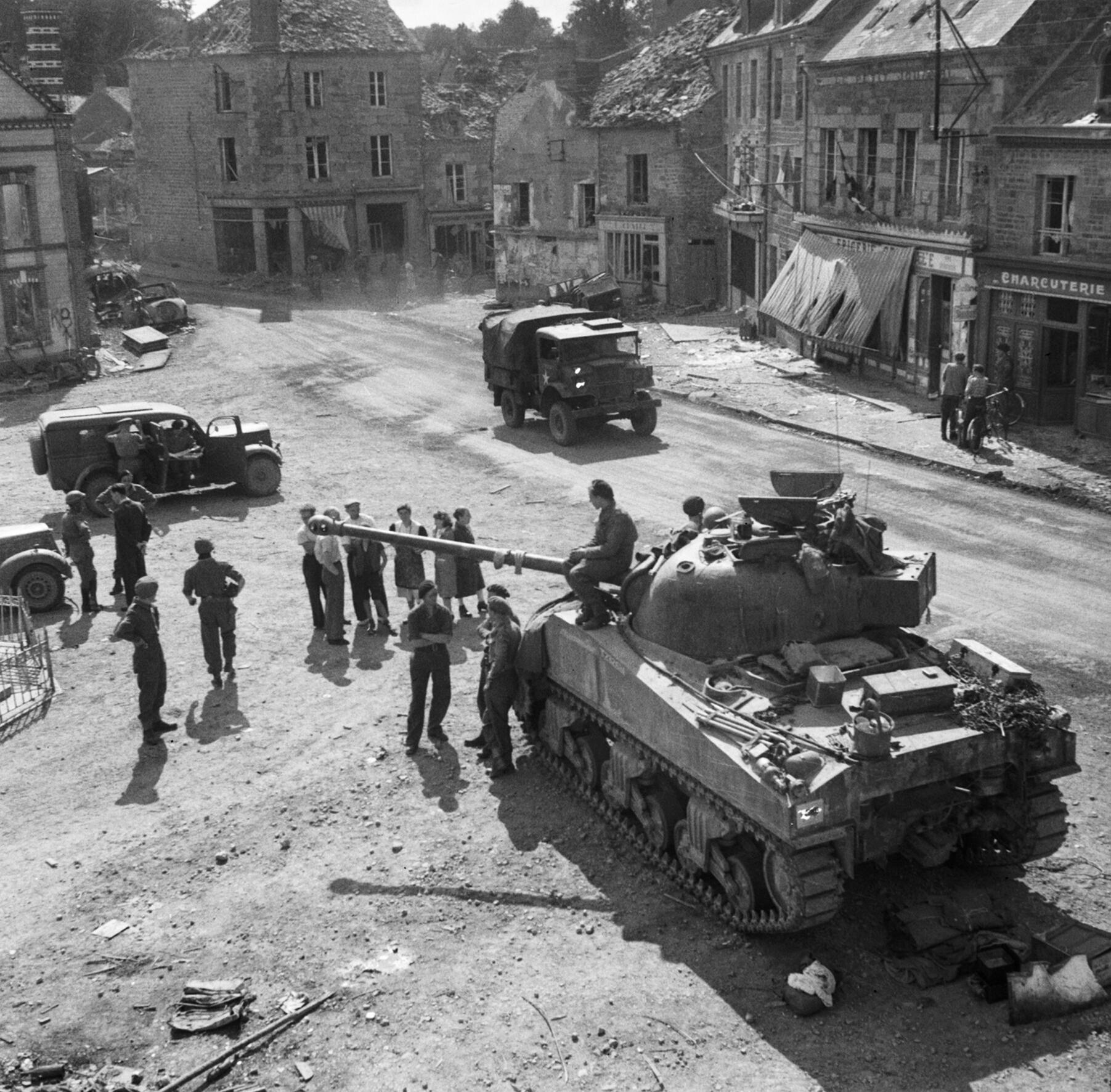
This is the Firefly based on the Sherman I or the M4. The lower case C after the Roman numeral designates the tank is armed with a 17 pounder. An M4 is a welded hull tank powered by an R975, so you look for the grate free engine deck, with the big armored flap covering an air intake. Or, if the tank is welded, and does not have large spaces between the bogie assemblies, then it’s an Ic Firefly.
Sherman IC composite hull firefly: The Second Rarest And Most Comfortable
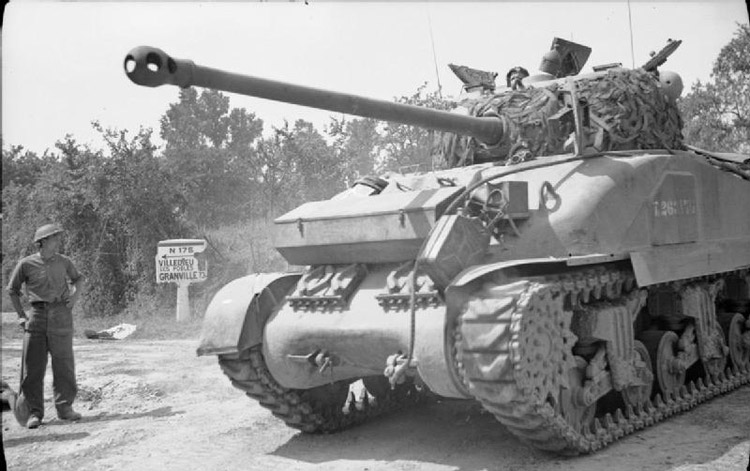
This version is based on the M4 composite hull; the version had a cast front hull, and a welded rear hull. It looks almost like an M4A1, but the rear and sides of the tank are all flat surfaces, just like a regular M4, the other difference is these tanks had the improved large hatch hull. They would be the most comfortable version of the Firefly for the driver. These tanks were probably the last firefly’s built as well since the composite hull tanks were some of the last 75mm Shermans produced. The British were not given any of the 75mm M4A3 tanks so none were converted. One final advantage to this version from an ease of conversion point of view is the composite hull tanks came with a loaders hatch already built in, so it saved time because they didn’t have to cut and fit one. Some of these tanks also had all around vision cupolas, so it’s possible a few made it onto fireflies.
Sherman Vc Firefly: The Version Powered By The A57 Motor, and Also the Most Common Firefly, But The Motor Makes It The Coolest.
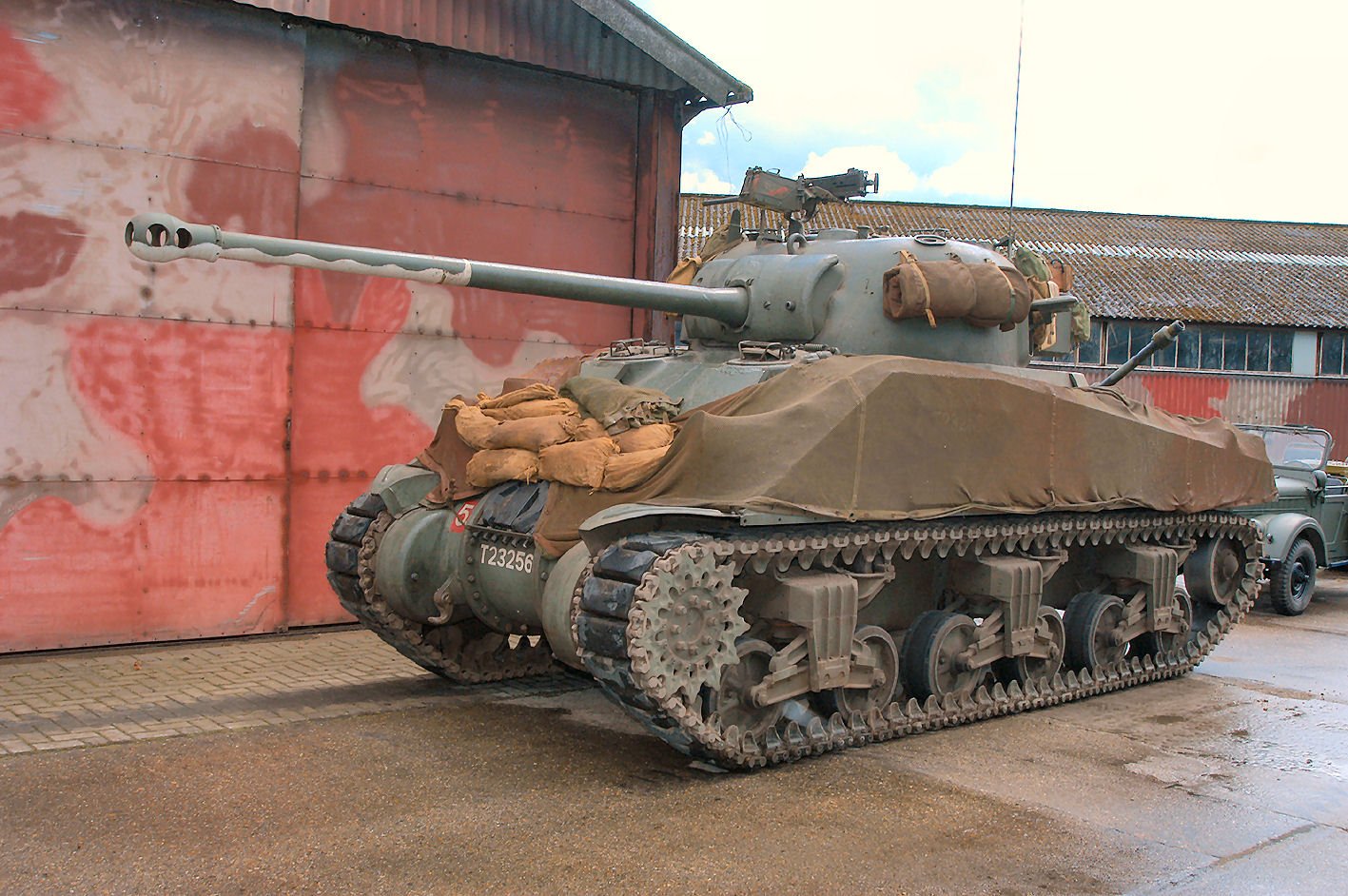
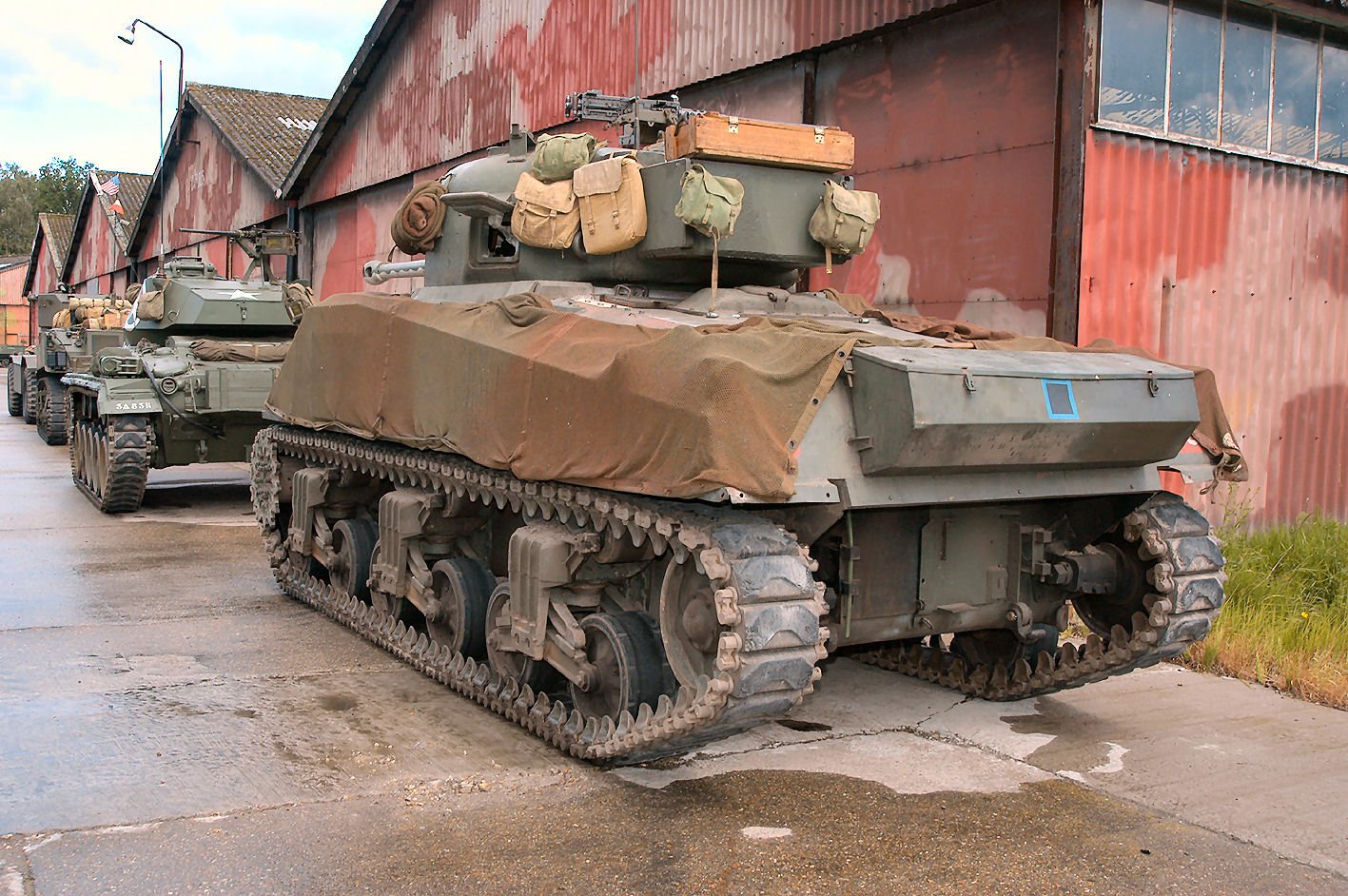
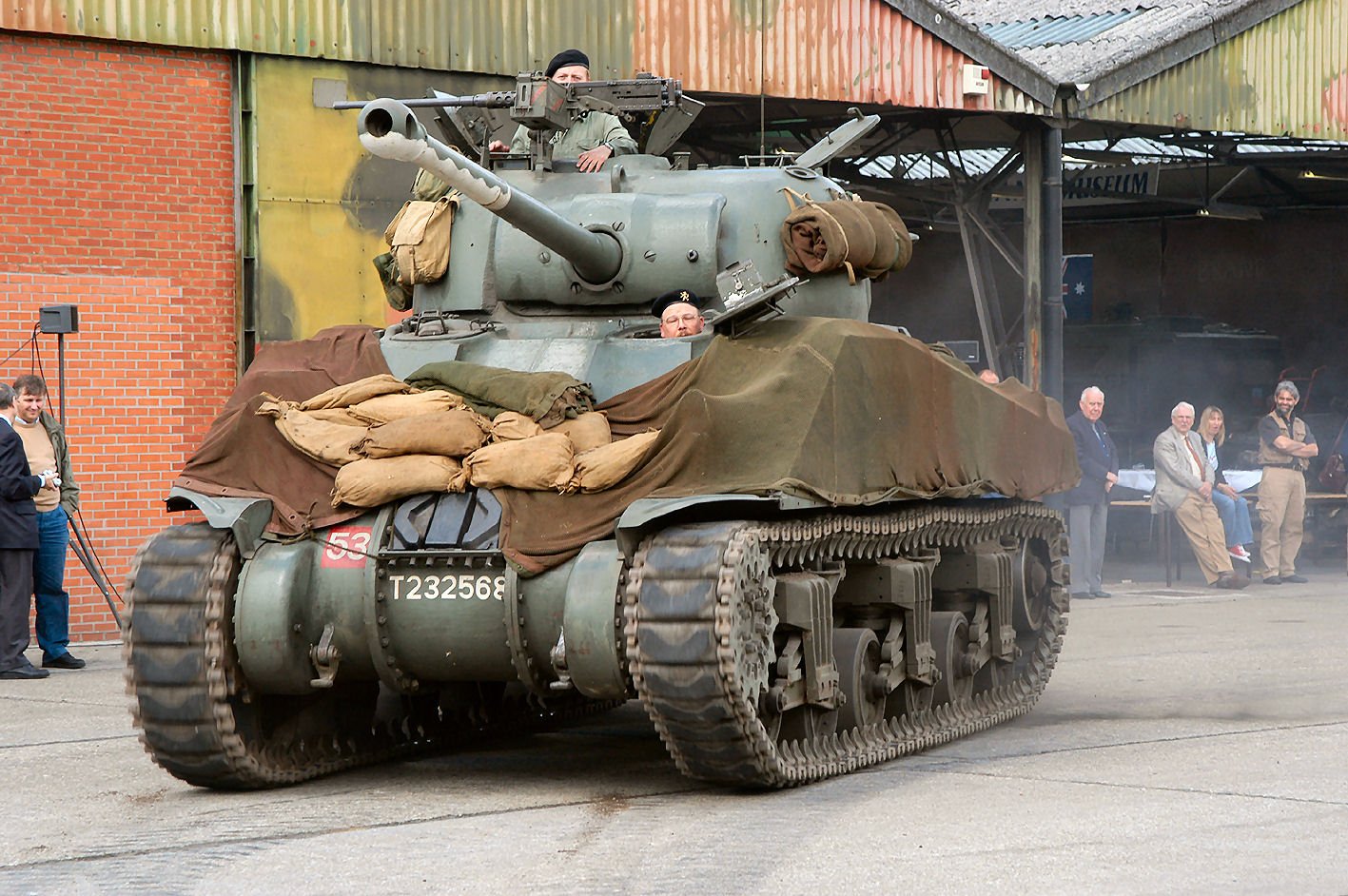
This version was based on the M4A4. These tanks are the “long hull” Shermans with the wide gaps between the bogie assemblies, and it has the distinctive bulges to the engine deck and lower hull. These hull features, with a firefly turret and gun, is more than enough to identify it as Vc. This Firefly type was powered by the mighty A57 multibank. The Wiki on the Firefly is trash; don’t go crawling around trying to see if the lower hull has rivets when most of the M4A4 production run had welded lower hulls. This may have only been a dubious way to identify an M3A4, you know if you missed it being almost a foot longer with huge gaps between the wheelsets and the bulges on the top and bottom.
This was the most common version of the Firefly since it was the Brits most numerous lend-lease Sherman. They got refurbished training A4s from the US and took as many of these them as they could because the production of 75mm Shermans had been drastically cut back and production of the M4A4 had been suspended.
♠♠♠
Demand for the Firefly dropped off late in the war. They had produced enough that just about all the commonwealth nations the British supported received them. The Brits were able to put two Fireflies into most of their tank platoons, just as German armor became so scarce they didn’t really need them. By the end months of the war, the Firefly may have been more of a liability, than useful.
If you compare the Firefly to the upgraded M4A1 76w, you will see it really isn’t the best Sherman by any measure but raw gun penetration. We’ll use the composite hull Ic in the comparison since the same motor powered these tanks, and the composite hull had a very large casting for its front hull, making this as close to a second gen Sherman as the Firefly could get. Yet the composite hull tanks were produced early enough, they did not get wet ammo racks. They did get the armored ammo racks, but they really only offered protection against fragments lighting the ammo off.
This fix did not work nearly as well as the wet ammo racks on the M4A1 76, and other fully second gen Sherman tanks got. The main advantage was having the ammo lower in the tank, below the bottom of the sponsors, and encasing it in water jackets. It was found the most benefit came from the change in location, and the liquid part was discontinued post-war. The wet ammo rack second gen Shermans were amongst the safest WWII tanks to be a crewman on.
Now on to the turrets, the M4A1 76 tank has the improved T23 turret. These turrets came with the all-around vision cupola, a loaders hatch, and the 76 M1A1 gun, with a 30cal co-ax. The turret was designed around the gun, and was nice and roomy, offering relative comfort and ease of movement to the crew, allowing the gun to maintain the 20 round a minute rate of fire the 75mm gun had. It had better armor than the 75mm turret. The fireflies all used a modified 75mm gun turret, and even after redesigning the gun, the 17 pounder took up a lot of space and recoiled into the bustle, where the radio used to be. This made for a cramped turret, and a slower reload time. The T23 turret is better, and it’s a shame the Brits would have had to redesign the 17 pounder gun again to fit one into it.
At first glance, most people when they compare the M1A1 gun and the 17 pounder conclude the 17 pounder is ‘better’ based on its armor pen. This doesn’t take into account the other factors that make a good tank gun. In WWII, tanks faced other threats far more often than tanks. For the forces facing the United States in particular, tanks were never overly common and got rarer as the war went on. What Shermans faced most often, and what killed them most often was AT guns and infantry with AT sticks. The 17 pounders lack of HE round during the war, along with its lack of a bow machine gun, really hindered the Firefly in the infantry support role. The M1A1 didn’t have the best HE performance, but it was still adequate. It had enough AT performance to handle the PIV, Stugs and various TDs it would face. Including the cats, the M1A1 did not have the best balance of AT/HE performance, but it would get the job done, and as the war came to a close HVAP ammo, that really helped the guns AT performance, become increasingly available. The M1A1 also had a very big performance lead in rate of fire; double that of the 17 pounder.
When you take all these factors, it is clear the 76mm T23 turreted second gen M4A1, A2 and 3s were all better tanks than the Firefly, of any model. The reasons for this are the second gen Shermans all had wet ammo racks, and along with all the other minor improvements that came with the second gen Shermans. The 17 pounder gun would eventually get a good HE round, but not during the war, so the dual purpose us M1A1 gun is clearly a better choice for a general use medium tank.
I won’t go so far as to say the British should not have produced them. Since the Brits faced the majority of the German heavy armor in Normandy, a pure AT tank was more useful for them, and that’s why they built them. I’ve read in more than one place that the Germans always tried to kill off the fireflies first, and the firefly units used a cool paint scheme on the gun barrel to make it seem shorter to help hide the fireflies, but I’ve never seen it confirmed from the German side. These tanks were potent enough, killing the famous Nazi tank “Ace” Michael, the Nazi punk, Whitman, when he foolishly trundled by himself into their guns.
I find it amusing the most mechanically complicated Sherman was turned into the best pure AT Sherman by the Brits and was still more reliable than any Nazi tank. It may be a tad overrated, but it did exactly what it was designed to do, without compromising the reliability of its base platform. That makes it a smashing success and it gave the Brits a capability their American cousins lacked until much later in the war. It did so well, the Brits offered to convert some, and there was an abortive program that petered out because army ordinance thought the M1 gun would be good enough. During bulge hoopla, the program was revived, but this was short-lived, and none of the American Firefly tanks were issued to troops.
Sources: Armored Thunderbolt by Zaloga, Sherman by Hunnicutt, various Chieftains Hatch posts, The Sherman Minutia Site, M4 Sherman tank at War by Green, WWII Armor, Ballistics and Gunnery by Bird and Livingston
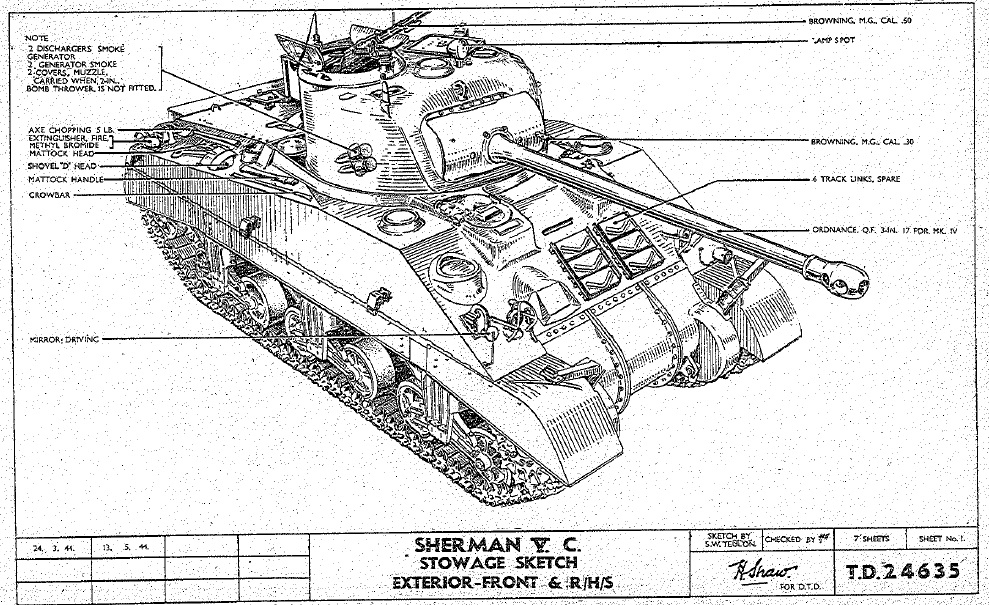
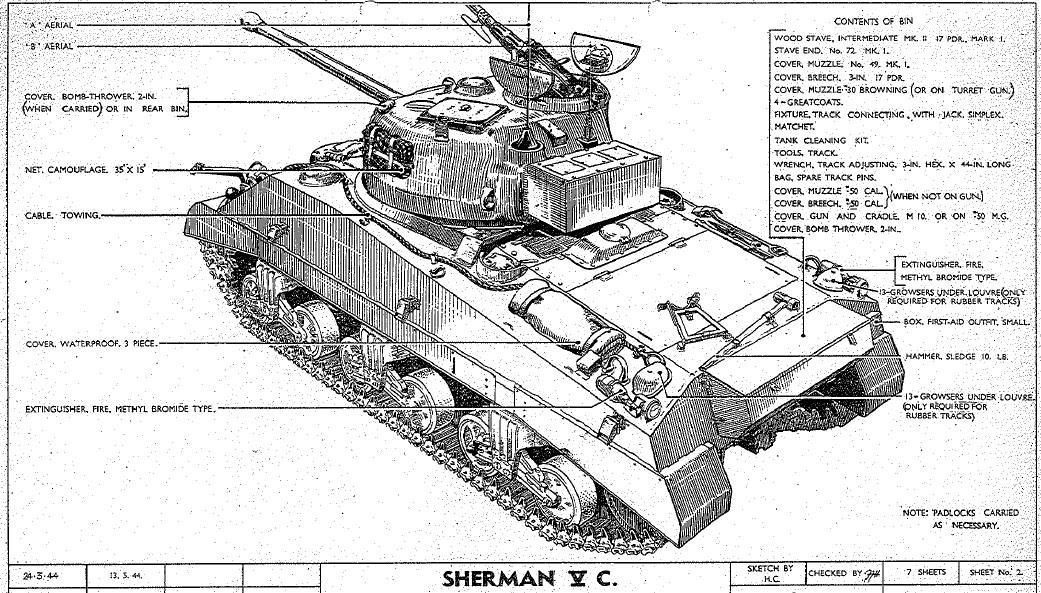
I have a question
I know there is a Ic Firefly and a Vc Firefly, and I know for sure there were never any M4A3s / Sherman 4s sent over, but is there such a thing as a IIc of a IIIc?
The British did not consider the up gunning the 76mm Sherman, has it would impact development of Centurion. Given, the game changing design of Centurion, not delaying it, made total sense. The other problem was the height of Sherman, the Comet was a significantly lower profile, which for the British doctrine was considered important.
The Super Sherman that never fought. Sherman by Hunnicutt, page 112, discusses the Armoured Boards request to fit the 90mm Gun into the Sherman, Autumn 1943. Then he explains the fall out, with Ordnance wanting Pershing and Army Ground Forces, McNairs tanks don’t fight tanks doctrine.
Apparently, a prototype was produced, using a Pershing turret. Therefore it is possible to conclude.
1, The Armoured Board had rightly concluded they need a hole puncher Autumn 1943 to fight the cats.
2. The knew the 76mm was not up to the job, why request the 90mm then.
3. The 17 pounder was never going into an American Sherman, Army Ground Forces McNair would stop it. They are against put in their own best gun “So not invented here” does sum up the position.
Whilst hindsight is a marvellous thing, but consider a Sherman, with a Pershing turret, with a 90mm available for Normandy, how many US Army lives could have been saved.
What’s the double bustle I see on fireflies, where they have a second box hanging off the radio box
You make an interesting argument in the article and in some respects it’s a good one (from an all round perspective the 75mm Shermans, especially those with wet stowage and crews trained in how to use the gyro-stabiliser were the ‘best’ all round version). However, you undermine with a couple of points of erroneous detail. Firstly, the British Sherman ‘c’ tanks, armed with the 17pdr, were issued with high explosive ammunition from the outset. From May to October 1944 they used the HE Mk.IIT full charge round (MV 2,950 ft/sec), which in all honesty wasn’t great – it had a smaller HE filler than the 75mm round & the flat trajectory made it less effective. In October 1944 it was replaced by the HE Mk.IIT reduced charge (MV 1,800 ft/sec) which was an improvement. And in early 1945 this was supplanted by the HE/T/HC round, which had both the lower velocity and a substantially larger HE filler. So by 1945 the Sherman ‘c’ 17pdr tanks had an effective HE round.
You also don’t mention that the British Shermans, including the ‘c’ 17pdr tanks, had a much better commander’s cupola than the US models. This included all round vision blocks, an independently rotating cupola & the ability to put the hatches in a lowered position providing overhead cover but better visibility. Additionally the No.43 Mk 3/1 telescope in the 17pdr tanks was a far better gunsight (quality of lens, wider FOV and magnification) than the US equivalents. Equally the loss of the bow machine gun made very little difference as they were notoriously inaccurate and difficult to operated effectively. Arguably the loss of the fifth crew member was more important as it increased the maintenance/rearming/refuelling load on the remaining four members of the tank.
So worth reassessing your judgement to a degree when you take [u]all[/u] the facts into consideration. As such I still don’t think the Firefly was the best all-round Sherman variant but as an anti-armour version it reigned supreme. There was a reason why German tankers had a standing order to target the 17pdr tanks first as a matter of course.
Sources:
WO 291 Series in the National Archive, notably the papers from No.2 Operational Research Section attached to 21st Army Group
Hunnicutt
Fletcher
Hayward
Gudgin
The Panthers and Tigers always Targeted a Firefly over other tanks in the troop I am reliably advised, so whatever we think, it certainly gave the Germans quite a torrid time. I also remember a Firefly taking out 3 Tigers, one of them being the nazi Wittman.
Great looking tank.
Again thanks for all the info.
One book I have writes about the ‘The US ground forces’ wanting the 17pdr at least looked at, and forcing a comparison test in the US.
Guess who?…Gen McNair again! Insited it was tested vs the 90mm- over which of course it had few if any advantages. neatly ignoring the fact that only the M36 had , or at the time of the tests would soon have, the 90 mm gun……
I understand the 76mm with the Tungsten cored ammo was pretty much as effective as the 17pdr but that the ammo was about as common as rocking horse sh*t.
I have always been told that the 75 mm guns removed from the fireflies, were used to up gun the Chuchill Tank.
Waste not want not.
I don’t think that last part (Churchills) is correct. The Churchill 75mm gun was the British 75mm OQF MkV which is a different gun to the US 75mm. There was some conversions to earlier Churchills in the Med Theatre designated NA75s but this was a local conversion and nothing to do with the Firefly program
Yes you are correct. I went and looked it up again. There were sherman to churchill conversions but they seem to have been semi officialy done in the Middle East
Hi, go and have a read of Sherman, RP Hunnicutt page 212. About the 90mm Sherman, requested by The Amour Board. They had concluded Auturm 1943 that Sherman would be the only tank available for Normandy. He then goes through the reasons why it was fought against by ordnance and Armour Force, ie general McNair. A prototype with a Pershing turret was built.